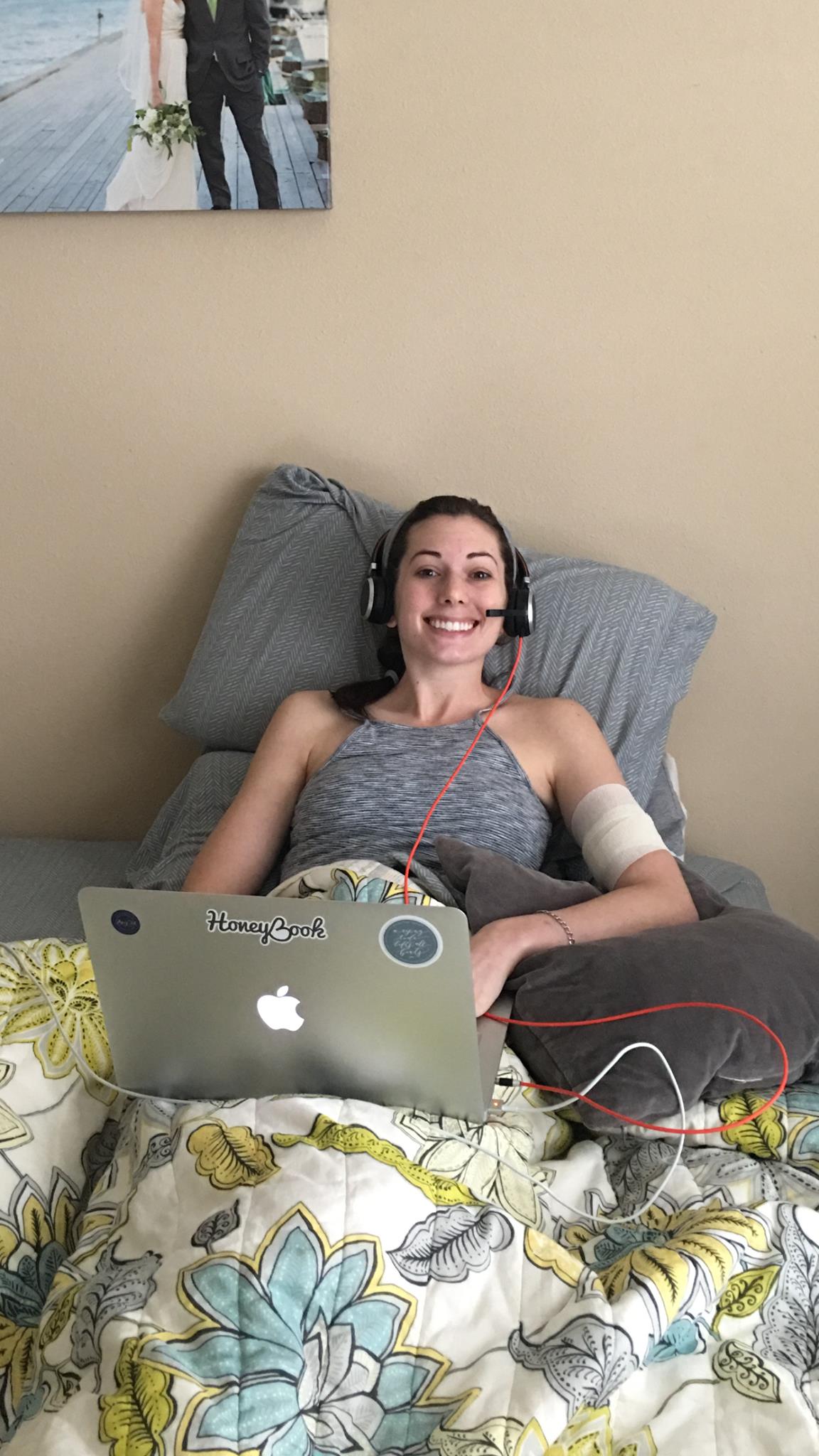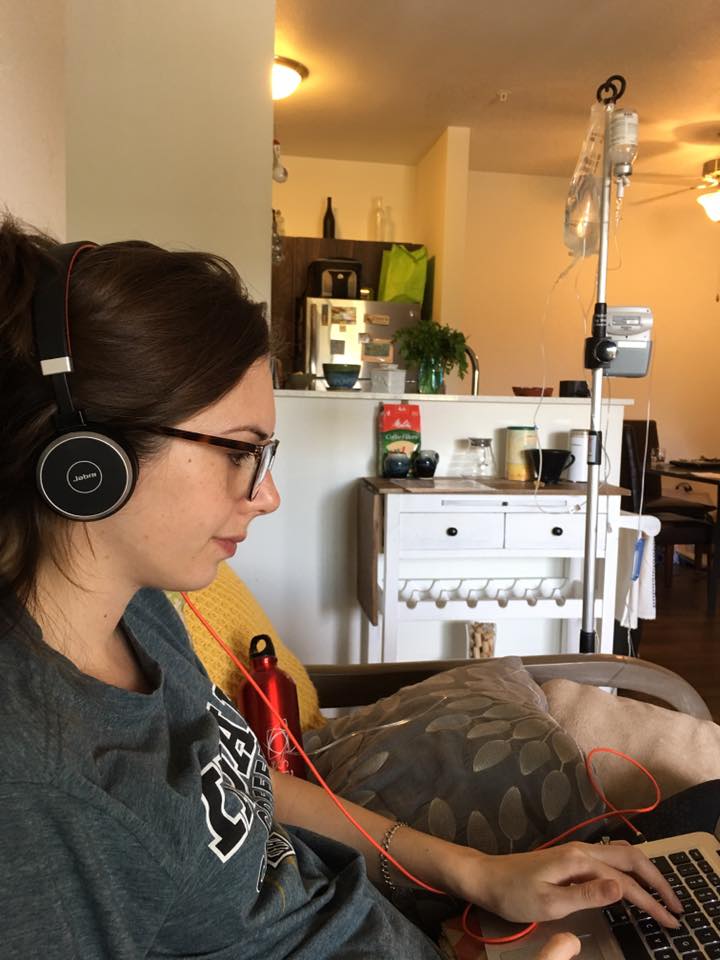Infusions Aren't Trendy
Infusions aren't trendy, and other things I've learned along the way as an immunotherapy patient.
I've been receiving treatment via infusions off and on for 8 years, and have been on a consistent schedule of immunotherapy treatment (IVIG: intravenous immunoglobulin) every 2 weeks since July 2016. Over that time, I've learned quite a lot about the perception of infusion therapy, the reality of what it looks like to depend on it, and the never-ending battles with insurance to receive the treatments that care teams deem medically necessary. Over the years, that means I've had opportunities to speak to new patients who have questions about infusions and offer support and advice within the chronic illness community to help other patients who are working with their doctors to decide if infusions like IVIG are the right next step.
What is it actually like to be a patient that depends on infusion therapy like IVIG?
First, it's often expensive. Even with insurance coverage (which can be very difficult to secure), the patient financial responsibility can be way beyond what the average chronically ill person can afford. I've talked about my annual claims here before. Every claim for every infusion I do is just shy of $10,000, or more than a quarter million dollars annually. I am one of the lucky few who can still work full time, which means I am able to have enough take-home money as a dual-income household to afford treatments. And I am even more fortunate to have excellent comprehensive insurance with my job because my husband's insurance is horrible to work with as an infusion patient. Even still, we pay thousands of dollars upfront for my treatments until I reach my annual out of pocket max.
Second, remember when I said that it can be hard to get insurance approval? Well, it is can be very difficult to get insurance approval for these types of treatments. Take IVIG for example. There are only 4 FDA approved labeled uses of IVIG therapy: Primary Immunodeficiency, Idiopathic Thrombocytopenic Purpura (ITP), Chronic Lymphocytic Leukemia, and Kawasaki Disease. While there are studies that show the off-label use of IVIG as effective in managing numerous serious and life-threatening autoimmune diseases like lupus or myasthenia gravis, insurance companies are able to use lack of FDA approval to deny these types of treatments even if patients have failed to respond to other first-line treatments that have FDA approval. That means it can, and often is, a never-ending cycle of peer-to-peer reviews, denials, and appeals in order for chronically ill patients to receive the treatments that their care team deems medically necessary.
Third, it's not pretty. I share snippets of photos and videos of my treatments to try to help normalize what infusion therapy really looks like for chronically ill patients. Being cursed with the "you don't look sick" kind of sickness it can be confusing for casual consumers of social media who scroll past my photo with an IV pole. The pre and post infusion medications cause drowsiness, irritation, restlessness, and I always have bloating from the extra fluid volume that comes with IV hydration and the IVIG itself. Those side effects are small compared to the type of side effects that the infusion itself can cause: headache, nausea, flu-like symptoms, fatigue, low-grade fever, back pain, and achiness are the mild and most reported symptoms. Some patients like me have to be vigilant about pre and post medication because of a history of severe reactions. Without those extra medications and IV fluid, the membranes around my brain and spinal cord begin to swell with inflammation and causes aseptic meningitis which is basically meningitis without the bacteria or virus. It's incredibly painful. Pretty, right?
And lastly, most of us don't actually enjoy the infusions or the limitations that come with scheduling them. In fact, many chronic illness patients who depend on infusions or immunotherapy have mild to moderate anxiety that stems from past infusions. I'm one of those people! Being a difficult stick with a history of severe reactions, I live in the dichotomy of being grateful to have a treatment that helps while also regularly dealing with a sense of dread around the stress of the infusions. The infusions are long (7 hours for me) and can be uncomfortable. I hold my breath every time we access my port, hoping that it still works and that we see good blood return. My anxiety around accessing for each treatment has decreased dramatically now that I have a port, but I still worry about the day the port will stop working because ports don't last forever. I also know without fail that I will lose an entire weekend to recuperating. The best thing for my body to do after an infusion is rest, and I feel guilty and sad that I have to give up 26 weekends every year in order to enjoy the other 26. Our entire schedule is dictated by my infusion schedule: work, travel, visiting family or friends, etc.
Now about that trendiness...
I promise this wasn't click bait. It's something I've talked about extensively with Travis and with my infusion coordinator, my nurse, and fellow infusion patients. In recent years, boutique IV therapy centers have been increasing in popularity. I see them on Instagram and advertised as booths at music festivals like Coachella. Celebrities share behind the scenes IG Stories and Snapchats of their "IV cocktails" to help them rehydrate after a long night of partying or to "boost their immunity" with water-soluble vitamins before traveling.
This was particularly disturbing for many of us in the chronic illness community post-Hurricane Maria when manufacturing shortages of medical supplies in Puerto Rico meant there was an extreme shortage of IV fluids as well as IV bags — and spoiler alert, those shortages have improved but are still impacting infusion patients who depend on these supplies today, more than a year later.
There's a tendency today to romanticize chronic illness and disability. In the chronic illness community, we call it "inspiration porn". We also live with a lot of comments from able-bodied folks who wish they could have our accommodations because to them, they're conveniences. These are all things that have been said to me over the course of my post-diagnosis life.
I wish I could get IV fluids because I hate the taste of water. I wish I could qualify for a disabled parking pass—it would make parking so much easier! I wish I could leave class 5 minutes early like you do. I wish I could work from my bed like you do. I wish I could bring my dog everywhere like you do (ok, this one wasn't said to me but to several of my friends who depend on service animals, but was too good not to include in this list).
And I'm sure they are not meant to be hurtful, but these types of comments perpetuate the idea that the tools, treatments, and accommodations we use to navigate the world built for able-bodied people are luxuries, and somehow validates the idea that these accommodations are mere perks to be taken advantage of. Lo and behold the yearning to take advantage of those "perks" that come with a failing body turn often into money-making businesses for able-bodied people who don't actually need those accommodations or treatments.
Back to infusions and the whole reason why I wrote this blog post on an infusion recovery day. To me, this highlights the huge schism between majority culture/mainstream society and the reality of life for the millions who live with chronic illnesses that require infusions to maintain a quality of life or even to maintain life at all. It's not a trend for us, but an expensive and difficult medical necessity to keep going.
Now, I'm going to take a nap and try to sleep off these body aches.


